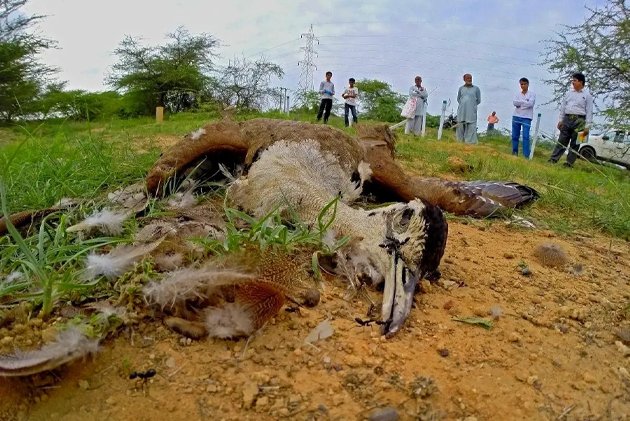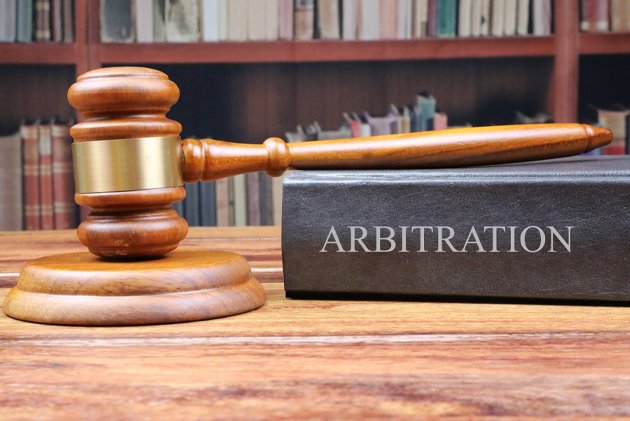October 10, 2025

Striking A Balance Between Development And Nature- The Role Of Judiciary In Implementation Of Energy
INTRODUCTION
Homo sapiens have been curious about their surroundings since the dawn of civilization pushing their limits to unlock their intellectual potential and paving the way to some life-changing inventions, electricity proved to be one of the most essential inventions of mankind towards the overall economical productivity. It is pertinent that Electricity has been lighting lives with its huge contribution to the society in a variety of ways since the 18th century.
The building of Thomas A. Edison’s Pearl Street Station, a Dc generator and radial lines transmission system used primarily for lighting, in New York City in the year 1882, played an important role in laying the foundation of the modern electric power transmission. The structure of electricity sector in India finds its place in the concurrent list of the Indian Constitution. Speaking of the legislation pertaining to electricity, the Electricity Act, 2003 has succeeded the Electricity Act, 1887 and the Electricity Act, 1903 and, is a full packaged legislation consolidating the laws relating to generation, transmission, distribution, trading, and use of electricity in India. After the process of generation, electricity is transmitted through government or private transmission utilities like the Power Grid Corporation of India Limited for interstate transmission and for state and the State Transmission Utility (STU) for setting up intra-state transmission projects. Distribution companies conduct the process of dissemination of electricity with the end customers.
Although, the laws prevailing in India pertaining to electricity envisage promotion of environmentally benign policies and avoidance of environmental damage, the negative impact of the electricity generation on the environment cannot be completely eradicated. In the process of generating and transmitting electricity, flora and fauna are also being harmed. Several species of birds either die due to collision with the high-tension wires or due to electrocution. Some species of birds like the Great Indian Bustard and the Lesser Floricans, mostly found in the Indian sub-continent (Rajasthan & Gujarat) are true examples of the above defined phenomenon, on account of which, both these species are on the verge of extinction.
- THE GREAT INDIAN BUSTARD:
The Great Indian Bustard or Ardeotis Nigriceps (in short, ‘GIB’) is one of the heaviest flying birds in the world ranging from 15-18 Kilograms, about a meter in height and having wingspan of 210-250 cm. Its population is confined mostly to Rajasthan and Gujarat with small populations in Maharashtra, Karnataka and Andhra Pradesh. It is construed as the front runner grassland species, representing the health of the grassland ecology.
There are several factors responsible for the rapid decline in their population, but the electric power lines pose a significant threat to the survival of GIBs. Bustards seemingly have sideways vision to maximize predator detection but have poor frontal vision thereby preventing them from detecting the power lines. The GIB is listed in Schedule I of the Indian Wildlife (Protection) Act, 1972 and under the Conservation of Migratory Species of Wild Animals (“CMS”).
It has been identified as one of the species for the recovery program under the integrated development of Wildlife Habitats of the Ministry of Environment and Forests, Government of India. Further, surveys conducted by Wildlife Institute of India (WII) Power Line Mitigation, 2018 states that about 16 (sixteen) GIB die per year amounting to a population of about 150 individuals in Thar desert region, therefore, such high mortality rate is unsustainable for these species and will certainly result in its extinction. It is also evident from the 13th Meeting of the Conference of the United Nations Convention on Migratory Species of Wild Animals (CMS) hosted by the Central government from 17th to 22nd February 2020, at Gandhinagar pursuant to the Proposal submitted on behalf of the Government of India wherein it was stated that, the GIB population in India had fallen to just 150 out of which 128 (one hundred and twenty eight) birds were in Rajasthan, 10 (ten) in Kutch district of Gujarat and a few in Maharashtra, Karnataka and Andhra Pradesh.
International Union for Conservation of Nature’s Red List (IUCN) of threatened species reclassified the GIB as critically endangered in 2011. According to ecologists, approximately 90% natural geographic range of this species has been lost due to linear infrastructure intrusions. The Worldwide Fund (“WWF”) has provided inputs in developing the guidelines for the state action plan for resident Bustard Recovery Program in India.
LESSER FLORICANS-
The International Union for Conversation of Nature’s Red List of threatened Species declared the Lesser Floricans to be critically endangered species and less than 1000 individuals being alive as of 2017. It is of topmost conservation priority which shows transboundary movements. Its migration exposes it to threats such as land use changes, hunting and degradation due to Collison. It is the smallest in the Bustard family and only member of genus Houbaropsis which will be extinct in 25 years if proper protective measures are not effectuated.
JUDICIAL ACTIVISM TOWARDS SAFEGUARDING THE ENDANGERED SPECIES-
To back up the objective of protecting the endangered species, various legislative provisions and Acts have been enacted by the Government of India. The Constitution of India is the supreme law which not only protects the human rights but also poses obligation on human beings to protect the endangered species from extinction. Article 21 of the Constitution of India, 1950 states that Right to life is a fundamental right of every individual.
In M.C Mehta vs Kamal Nath the Hon’ble Supreme Court enunciated that, certain common properties like the water bodies, forests and air comes under the trusteeship of the Government. The state as a custodian of the natural resources has a duty to protect them not only for human needs but for the flora and fauna, wildlife and so on.
Whereas Article 48A and Article 51(G) envisage protection and improvement of environment and safeguarding of forests and wildlife. In T.N. Godavarman Thirumulpad Vs. Union of India & Ors., the Hon’ble Supreme Court observed that environmental justice could be achieved only if we drift our focus from the Principle of Anthropocentric to Ecocentrism. Anthropocentric is a concept that means humans are the most important element of existence and their needs comes above all, whereas Ecocentrism is nature-centered where humans are part of nature. Furthermore, in Centre for Environmental Law, World Wide Fund – India Vs. Union of India & Others, the Hon’ble Supreme Court considered the protection and conservation of endangered species and observed that Sustainable Development is the development that meets the needs of the present without compromising the ability of future generations to meet their own needs argued upon by eminent environmentalists to be anthropocentric and least concerned with the rights of other species.
SUPREME COURT’S DIRECTIONS FOR THE PROTECTION OF GREAT INDIAN BUSTARD AND EMPHASIS ON ADOPTION OF ECO-CENTRIC APPROACH-
To address the most pertinent issue towards the protection of GIB and Lesser Florican, which are on the verge of extinction, environmentalists filed a writ petition titled as M.K. Ranjitsinh v. Union of India and Others. The Petitioners had also filed a separate application seeking interim directions to the state of Rajasthan and Gujarat which are stated as under:
- Ensure predator proof fencing and controlled gazing in the enclosure development.
- Disallow installation of overhead power lines.
- To not permit further construction of windmills.
- Installation of solar infrastructure in priority and potential habitat as identified by the Wildlife Institute of India.
- Install divertors for the power lines in the state of Rajasthan and Gujarat.
The respondents in the said petition whilst expressing their sensitivity to the issue contended that the cause of the death of the endangered GIB is not the electrocution but the collision with the power lines and further contended technical unfeasibility of laying the underground high voltage power line owing to several factors such as, high cost, high downtime to repair any failed cable, non-availability of cables at 765 Kv level and increase in the number of joints with length of run. The petitioners on the other hand contended that, many states have already undertaken the move of laying the high voltage power lines underground. In this regard, the petitioners in addition to referring to the invitation of public comments for laying underground cable transmission line by the Government of India, Ministry of Road Transport and Highways, referred to the report published by the PGCIL indicating that the undergrounding of 220 kV power line is possible and is being done in India. To illustrate further, the petitioners also referred to the existence of the underground 10 kilometres long power lines by GETCO for the safety of Greater Flamingos in the Khadir Region of Kutch. Whereas, it was submitted by the respondents that the underground power lines cannot be made comparable in all cases in as much as the same would be possible depending upon the area, terrain and the distance for which such cable line is to be laid which cannot be of universal application.
In the backdrop of the submissions made by the parties to the Petition, the 3 Judge bench comprising of Hon’ble Mr. Justice S.A Bobde, Former Chief Justice of India, Hon’ble Mr. Justice A.S Bopanna and Hon’ble Mr. Justice V. Ramasubramanian addressed the issue and remarked as under:
“…keeping in view, the sustainable development concept and on striking a balance the protection of the rare species of birds is essential to be made, the effort being to save every bird while at the same time allowing transmission of power in an appropriate manner…….”
After taking into consideration the submissions made on behalf of the parties, various reports on environment and judicial precedents, the bench directed that government shall take effective measures towards-
- Installation of divertors to the already established overhead powerline or pending for the conversion to underground powerline pending in GIB habitats.
- Study shall be conducted regarding the feasibility for the lines to be laid underground.
- For the overhead power lines to be laid in future, the installation of the divertors shall also be a condition attached in the contract to be entered with the power generating companies.
- Introduction of underground system of powerlines where it is feasible within one year is to be ensured, irrespective of the cost factor.
- Considering the suggestive arguments made towards the mobilization of the financial resources to save the near extinct birds, the Hon’ble Bench directed the attention to the following:
- The electricity utility engaged in the generation of power to make use of Section 135 of the Companies Act, 2013, which imposes Corporate Social Responsibility upon companies having specified net worth and turnover.
- Implementation of the Afforestation Fund Act, 2016 (CAF, 2016), whereby, substantial funds are available with the National and State Authorities. The State of Rajasthan has already set up a Compensatory Afforestation Fund Management and Planning Authority. Rule 5(2)(i) of CAMPA Rules permit the use of the State Fund for the improvement of wildlife habitat.
- The area where these birds (GIB and Lesser Floricans) lay eggs should be earmarked, fenced, and protected.
- The low voltage overhead powerlines existing presently in the priority and potential heads habitats of GIB shall be converted into underground powerlines (subject to feasibility).
- For assessing the feasibility of laying of high voltage underground powerline, the Bench constituted a committee consisting of Dr. Rahul Rawat (Scientist), Dr. Sutirtha Dutta (Scientist) and Dr. Devesh Gadhavi, Deputy Director (The Corbett Foundation), being the experts of their relevant fields. The Committee was granted liberty to obtain technical reports, if need be, from experts in the field of electricity.
- The respondents were directed to approach the Committee with all relevant material and particulars in situations where they experience the issues relating to feasibility of laying the underground power lines and/or converting the overhead powerlines to underground powerlines.
- The Committee shall assess the issue and arrive at the conclusion through a report and based on such report, the Respondents would, in all such cases where it is found feasible to lay the underground power lines and/or to convert the overhead powerlines to underground (as the case may be), complete the same within one year and till such time the divertors are hung from the existing powerlines.
COMPLIANCE OF THE HON’BLE SUPREME COURT’S JUDGMENT-
The abovementioned directions of the Hon’ble Supreme Court are strictly binding on the Central Electricity Regulatory Commission (CERC), Central Transmission Utilities (CTU) and State Transmission Utilities (STU).
The Hon’ble CERC, New Delhi vide its order dated 26.08.2021 passed in Petition Nos. 136/TL/2021; 141/AT/2021; 137/TL/2021; 138/AT/2021; 139/TL/2021 and 140/AT/2021 concerning the Projects of Fatehgarh Bhadla Transco Limited and Sikar New Transmission Limited, disposed of the said Petitions with a view that no purpose will be served in keeping such petitions pending till compliance of the Order of the Hon’ble Supreme Court, as such projects fall within the potential habitat of GIB. However, the liberty was granted to the Petitioners to approach the Commission with fresh Petitions in this regard after such compliance. Hon’ble Commission further clarified that when the Petitioners are aware of the measures required to be undertaken yet the same remained unattended, it would not be appropriate to create potential liabilities and pass on such liabilities to the beneficiaries and consumers under change in law.
The Committee in compliance of the Order submitted the status report dated 20.04.2022 before the Hon’ble Supreme Court as was recorded in the hearing of the said writ petition on 21.04.2022, which indicated that eight applications were received by the Committee seeking exemption from the requirement of setting up underground transmission lines. In pursuance of those applications, the Committee had obtained the technical report from the CEA upon the feasibility of the undergrounding 400 kV and 765 kV transmission lines. Another technical report has also been sought by the Committee from CEA on the undergrounding of 66 kV and 220 kV transmission lines to which a reply was awaited. The Hon’ble Supreme Court in the said hearing also ordered for the injunction imposed in the preceding order to be scrupulously enforced, on the installation of the fresh overhead transmission lines, save with the approval of the Committee.
CONCLUSION
The word “environment” is defined as the “inter relationship which exists among and between water, air and land, and human beings, other living creatures, plants, micro organisms and property”. The Hon’ble Supreme Court played a proactive role in the public interest litigation by striking a balance between the protection of the rare species of birds and the development in the electricity sector in India and reminded the State yet again, its duty as that of a custodian of the natural resources and to preserve and maintain them not merely for the benefit of the public, but also for the best interest of flora and fauna. The Hon’ble Supreme Court had directed the installation of the divertors and conversion of the overhead cables into underground powerlines and undergrounding the overhead powerlines wherever feasible and directed the same to be completed within a specified period. Further, the Hon’ble Supreme Court, besides noting that the progress in installation of the bird divertors by the State of Rajasthan being deficient in all respects, imposed the injunction on the installation of the fresh overhead transmission lines, save with the approval of the Committee and directed the same to be enforced scrupulously.
However, media report dated 28th July, 2021 suggests that, the Central government informed the Rajya Sabha that there were no GIB in Kutch Bustard Sanctuary in Gujarat’s Kutch district as on January 1, 2021. The reply, which came in response to a question posed by Congress MP Shaktisinh Gohil, raised many eyebrows among conservationists and wildlife enthusiasts as it had come just three months after the Supreme Court’s order to power companies to place their overhead powerlines underground in GIB habitat in Rajasthan and Kutch to save the species from going extinct.
The dwindling number of the Great Indian Bustard and Lesser Florican can be curbed by making no overhead Power-line zone by adopting underground powerline to prevent power-line mortality on account of collision and electrocution and, by providing a safe-haven for these endangered birds for breeding by earmarking, fencing, and protecting such area for the said purpose. Although the survey conducted by the WII indicates that it would not be feasible to lay underground power cables in certain areas and therefore in such locations, bird divertors should be installed on the existing power lines in the vicinity of the habitats of these endangered birds.
Further, the construction manuals prescribed by CTUs and/or STUs for construction of the transmission lines and the incidental EPC contracts need to be re-visited to make necessary additions/alterations towards the bird-friendly construction principles and incorporate effective solutions of insulation of poles of medium-voltage power lines such as Silicon cover of jumper wire and plastic hood on support insulator (as implemented in Slovakia), console cover and plastic black hood on support insulator (as implemented in Hungary) and to incorporate different types of bird flight diverters such as Firefly Bird Protection, Aerial marker balls (as installed in countries like Austria and Slovakia), Bird Mark Afterglow, RIBE Lamellas, etc. as may be made applicable in the power lines installed or to be installed in India.
Lastly, a holistic approach needs to be adopted to protect every flora and fauna whilst allowing transmission of power in an effective manner to promote the development in the most sustainable way possible else the days are not far, that species like GIB and Lesser Floricans would be counted as extinct and would merely be reduced as images with a brief background in school textbooks.
Authored By:
Ms. Nivedita Chauhan, Advocate
Founder & Managing Partner



